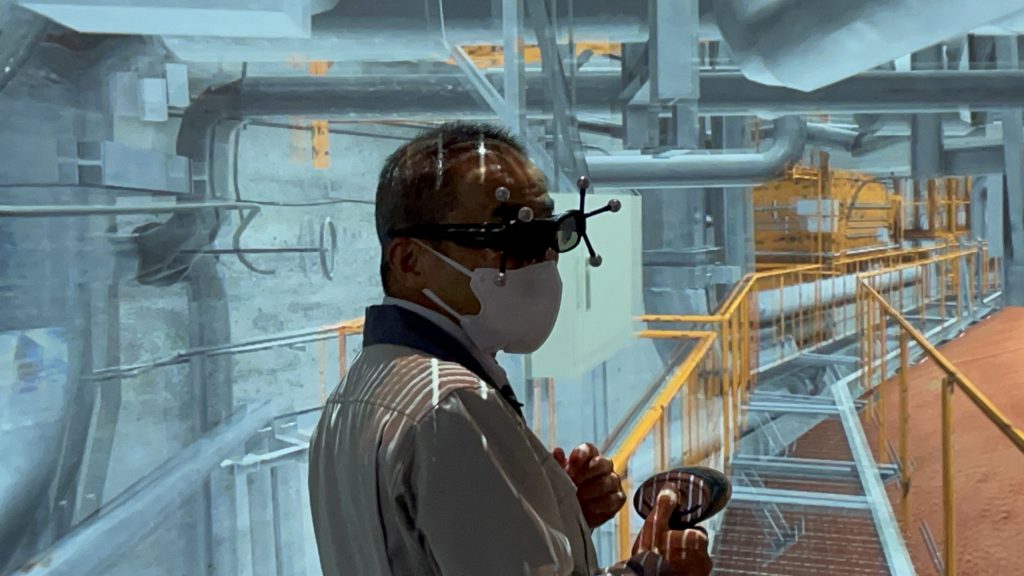
- ARAB NEWS
- 16 Aug 2025

Khaldon Azhari
FUKUSHIMA, Japan: Arab News Japan had a rare opportunity to film a virtual reality system that shows how robots are being operated inside the crippled Fukushima Daiichi nuclear reactor, where the melted nuclear fuel and rods are accumulated as a result of the 2011 nuclear disaster.
The system is used by the Naraha Center for Remote Control Technology Development (NARREC) of Japan’s Atomic Energy Agency. It includes real images of robots inside the reactors, and it accurately calculates distances between different objects and structures inside these spaces.
NARREC began operations in April 2016 as a facility for R&D and experimentation for the remote-controlled robots vital to decommissioning the Fukushima Daiichi reactors.
The facility is in a building separate from the reactor buildings and has a virtual reality system that accurately replicates the interior of the nuclear reactors and allows decommissioning plans to be simulated in a manner close to reality.
The test building is equipped with testing facilities tailored to each environment, including mock-up stairs that reproduce various staircases in the reactor building and a pool for robot testing in which water temperature and quality can vary.
For the decommissioning process, remote-controlled robots are used to carry out work in highly radioactive areas in place of people.
This technology is expected to be further used for decontamination and debris removal.
The plan is for the robots to enter the suppression chamber and containment vessel in the No. 2 reactor, but these spaces are sealed, so the robots are unable to enter there or the basement and reactor core.
The robots are equipped with laser scanners that can assess up to 1 million points of spatial information data for each location.
They stop to scan rooms and spaces they can enter to allow a virtual re-creation of the rooms or spaces outside the facility including items in the rooms or spaces such as operational equipment, piping and debris and can show what needs to be cleaned up and what obstacles there are.
The robots also monitor the radiation levels in the air inside the spaces they enter. This virtual reality system uses goggles, creating a realistic experience for the observer and NARREC’s NOSAKI Nobuhisa demonstrated a virtual tour inside the reactor that humans aren’t able to access due to the high radiation levels.
The vertical tour participants said it felt completely real that when ‘going downstairs, the body balance was shifting and they had to maintain a stable upright posture.
Sometimes, they would unconsciously bend down to avoid their heads hitting the virtual ceiling. Japan estimates that it will take up to 40 years to decommission the devastated Fukushima nuclear power station.